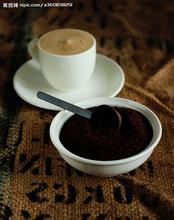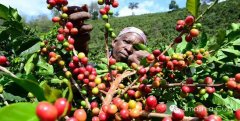The method of handling coffee beans pocket coffee machine
a. Washing / non-washing
Washing type: in the sink, after rubbing with water and utensils, the pulp and colloid are removed and dried, which is called washing coffee bean with uniform quality.
Non-washing type: after the sun is naturally dried, the pulp and peel is removed by a sheller, and its quality is unstable.
b. Flat beans / round beans
The fruit of coffee consists of two oval seeds opposite each other. The connecting side of each other is a flat joint, which is called flat bean. But there is also a round seed called a round bean, which tastes no different. Ripe and red coffee cherries have multiple structures. In the middle is the predecessor of the coffee bean, the light green seed.
Generally speaking, the fruit of coffee is made up of two oval seeds opposite each other. The side that connects with each other is a flat joint, so it is called flat bean. But some are made up of a round seed, and its taste is no different.
c. The size of coffee beans
Filter number (mesh no.)
Flat bean
20-19 large, 18 large, 17 quasi-large, 16 ordinary, 15 medium, 14 small, 13-12 extra-small
Round bean
13-12 big, 11 quasi-big, 10 normal, 9 medium, 8 small
d. Altitude
According to the elevation of the cultivated land, it can be divided into three, four, seven and other grades. Generally speaking, the quality of highland beans is better than that of lowland beans, and the price is higher because of the increase in freight.
Grade name elevation (m)
1 special grade beans 1.500 ~, 2 high grade beans 1.200 × 1.500, 3 medium beans 1.000 × 1.200, 4 grade water washed beans 900 × 1.000, 5 grade water washed beans 760 × 900, 6 special grade water washed beans 610 × 760, 7 excellent water washed beans ~ 610
e. Quality
According to the statistical method, the type and quantity of dopants contained in a certain amount of samples are converted into percentage "defect number", and the basis for determining the quality class is that the smaller the defect number is, the higher the quality is.
f. Taste
Brazil, Haiti, Kenya, say and other countries all have their own taste testing methods, which can be exported only after taste testing.
From harvest to shipment
Coffee beans
Coffee bean atlas
After the fruit is harvested, the outer skin, pulp, endocarp and silver skin should be removed before shipping. There are two kinds of methods: drying (also known as natural or non-washing) and washing. The drying method is relatively simple.
First of all, spread the freshly harvested fruit on the exposure field for a week or two until the fruit crackles and dries naturally.
After that, the dried pulp, endocarp and silver peel are removed by a sheller.
Coffee beans refined in this way are slightly sour and slightly bitter. Almost all coffee beans produced in Brazil, Ethiopia, Yemen and other places are obtained in this way. The disadvantage of this method is that it is easily affected by weather and is easy to be mixed with defective beans and other impurities. Therefore, it must be carefully screened.
Another way is to wash the fruit, in which the fruit to be harvested is put into a flowing trough. After the floating fruit is removed, the skin and flesh are removed by a pulp remover. Then put it in the sink to remove the emerging pulp. After that, move into the fermentation tank, soak for half a day to a day, and then dissolve the gum on the surface of the fermented coffee beans. After washing with water, drying it for a few days, drying it with a machine, and finally using a sheller to remove the endocarp to become a commercial raw coffee bean.
Water-washed coffee beans have more beautiful color and less impurities. Colombia, Mexico, Guatemala and other countries adopt this method for about 70% of their output.
Sometimes in the fermentation process, if not handled properly, it may give off fermentation odor and its unique sour taste, but if handled properly, all kinds of beans can give off their unique coffee aroma.
In order to complete delivery to the destination, raw coffee beans are packed in sacks and placed in special containers for long-distance merchant shipping trips.

Important Notice :
前街咖啡 FrontStreet Coffee has moved to new addredd:
FrontStreet Coffee Address: 315,Donghua East Road,GuangZhou
Tel:020 38364473
- Prev

Carmen Manor Coffee is a high-altitude coffee manor dominated by the family.
Carmen Manor [Origin]: Panama [Manor]: Carmen Manor [Grade]: SHB, EP [altitude]: 1750 m [soil]: black soil [particles]: 17 mesh [varieties]: Kaduai Catuai 70%, Kaddura Caurra20%, Iron truck Typica, Dwarf San Ramon San Ramon, New World Mundo Novo 10% [Bean treatment]: semi-washed Carmen Manor
- Next

Coffee bean production methods and production introduction
A brief history of coffee production In 1742, coffee was introduced into El Salvador from the Caribbean (one said 1740). In the mid-19th century, El Salvador's original export pillar Indigo (Indigo, a dye) gradually declined due to the development of synthetic dyes in Europe, and coffee gradually became the main export product under the leadership of the government. In 1856, the first 693 bags of coffee beans were shipped to Europe. always
Related
- Does Rose Summer choose Blue, Green or Red? Detailed explanation of Rose Summer Coffee plots and Classification in Panamanian Jade Manor
- What is the difference between the origin, producing area, processing plant, cooperative and manor of coffee beans?
- How fine does the espresso powder fit? how to grind the espresso?
- Sca coffee roasting degree color card coffee roasting degree 8 roasting color values what do you mean?
- The practice of lattes: how to make lattes at home
- Introduction to Indonesian Fine Coffee beans-- Java Coffee producing area of Indonesian Arabica Coffee
- How much will the flavor of light and medium roasted rose summer be expressed? What baking level is rose summer suitable for?
- Introduction to the characteristics of washing, sun-drying or wet-planing coffee commonly used in Mantenin, Indonesia
- Price characteristics of Arabica Coffee Bean Starbucks introduction to Manning Coffee Bean Taste producing area Variety Manor
- What is the authentic Yega flavor? What are the flavor characteristics of the really excellent Yejasuffi coffee beans?

